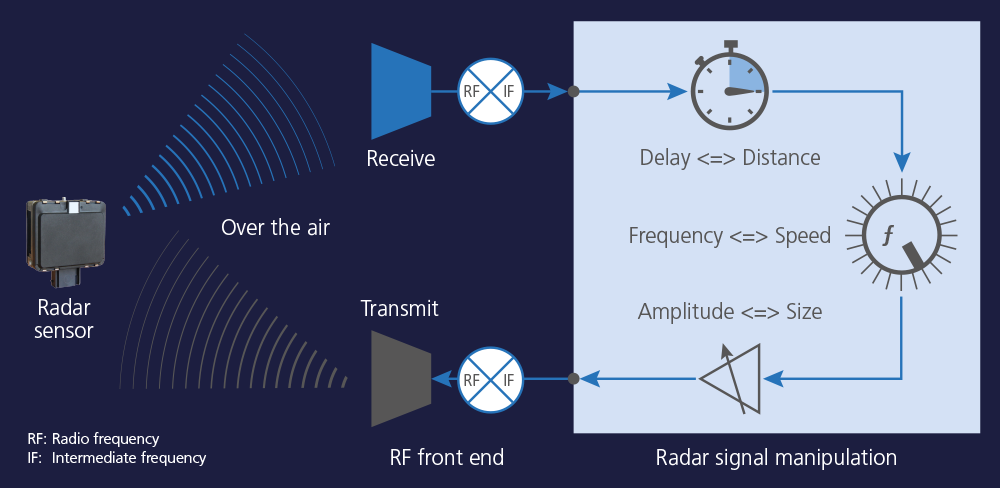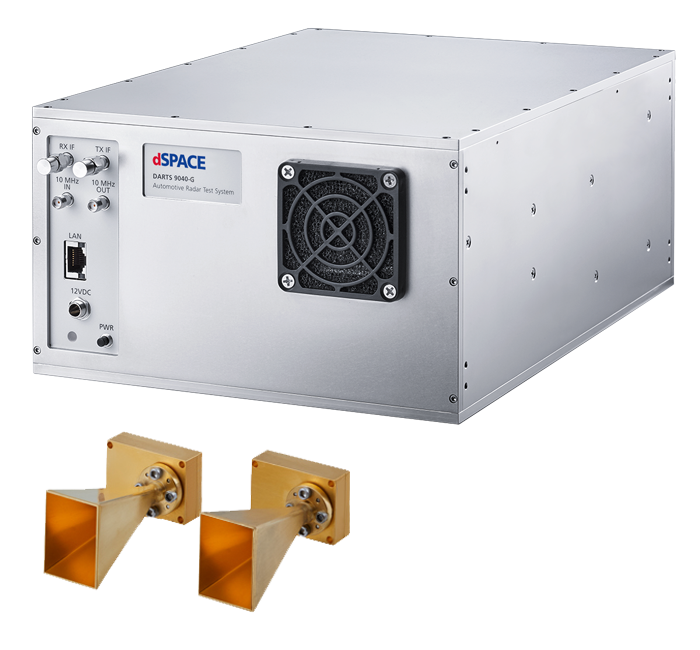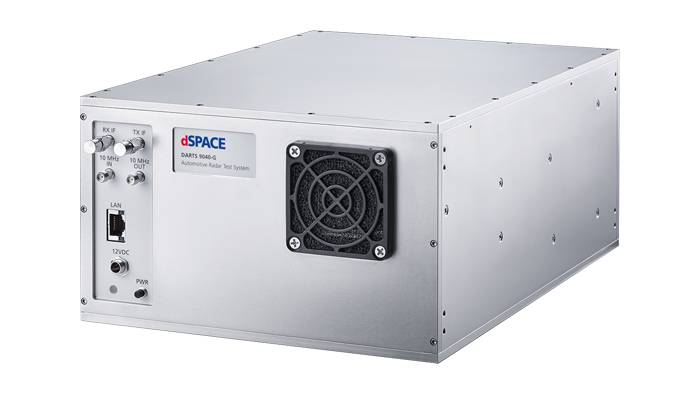Ultra-high-resolution imaging radar sensors, often referred to as 4-D radars, provide detailed images of the radar environment with a wide field of view as well as elevation, range, and speed information. Tests of these radar sensors place high demands on the capabilities and bandwidth of the radar simulator used. The dSPACE Automotive Radar Test System (DARTS) 9040-G is the first simulator to successfully meet these challenges with powerful high-frequency technology.
Assisted and automated driving poses enormous technological challenges for environment detection: For a self-driving vehicle to appropriately respond to any unforeseeable traffic situation, however complex, a reliable 360- degree panoramic view of its surroundings is required. This is where radar (RAdio Detection And Ranging) sensors are key. Until now, radar sensors have been able to detect their surroundings as a three-dimensional space only to a limited extent. They usually detect the speed, distance, and width of an object. The sensors can make only rough estimates of the object elevation at best.
New Technology: 4-D Radars
To ensure a more comprehensive image of detected objects, industry is pushing the development of high-resolution radars that also accurately detect the angle of elevation. The radar therefore becomes a de facto 3-D imaging technology – with speed as an additional fourth dimension of measurement. These sensors, also known as 4-D radars, provide the basis for precise real-time object detection that works in all weather and lighting conditions.
High Test System Requirements
To transmit the additional information with the high-frequency signal, ultra-high-resolution radars operate with a particularly high modulation bandwidth, which is typically 4 GHz. Previous radars usually operated with a bandwidth of only up to 1 GHz. Comprehensive testing and validation of the new sensor class significantly increases the demands on the test systems. Users therefore call for technology that covers more than the 4 GHz bandwidth of radars to be able to accurately analyze behavior in edge cases. This especially applies to radar target simulators, which simulate radar targets at long ranges, high speeds, and of different sizes under laboratory conditions and in real time.

The over-the-air method: The DARTS receives the radar waves from a radar sensor, generates a freely definable echo, and sends it back to the sensor.
First Radar Simulator with 5 GHz Bandwidth
In collaboration with its development partners ITS and miro•sys, dSPACE has designed the world’s first radar simulator that operates at a bandwidth of 5 GHz. The new DARTS 9040-G is designed and optimized for all next-generation automotive radars, such as imaging and 4-D radars. It completely covers the 77 GHz radar band without synthesizer tuning of the center frequency. The simulator has an exceptionally high, spurious-free dynamic range with a particularly low noise figure. This makes the new DARTS 9040-G ideal for all 77 GHz radars. Due to its easy-to-use over-the-air technology, the system can be used in all development phases, from chip design and sensor development to end-of-line tests. The new DARTS 9040-G is available in several variants, which are tailored to the different requirements of the tests in the different development and production phases.

Profile: Radar target simulator for over-the-air testing of automotive radar sensors
- Optimized for imaging or 4-D radar sensors.
- Simulates the reflections of a freely definable radar target (extension for additional targets possible).
- Simulates distance, speed, width, and elevation.
Technical Data
- Frequency range: 76 to 81 GHz
- Bandwidth: 5 GHz
- Range: ≤ 2.5 to 300 m
- Range increment: 2.5 cm
- Speed: ± 500 km/h


